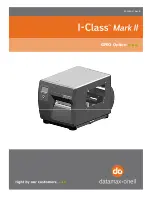
HOBO® RX Wireless Sensor Network
RXW EC-5 or 10H Soil Moisture Sensor (RXW-SMx-xxx) Manual
22241-A
This sensor measures soil moisture and is designed to work with the HOBOnet Wireless Sensor
Network in which data is transmitted wirelessly from the sensor mote across the network to
the RX3000 station and then uploaded to HOBOlink® web-based software. With HOBOlink, you
can monitor sensor readings, view graphs, set up alarms, download data, and more.
Specifications
RXW-SMC-xxx
RXW-SMD-xxx
Measurement Range
In soil: 0 to 0.550 m³/m³ (volumetric
water content)
In soil: 0 to 0.570 m³/m³ (volumetric
water content)
Extended Range
-0.401 to 2.574 m³/m³; see Note 1
-0.659 to 0.6026 m³/m³; see Note 1
Accuracy
±0.031 m³/m³ (±3.1%) typical 0 to
50°C (32° to 122°F) for mineral
soils up to 8 dS/m and ±0.020
m³/m³ (±2%) with soil specific
calibration; see Notes 2 and 3
±0.033 m³/m³ (±3.3%) typical 0 to
50°C (32° to 122°F) for mineral soils
up to 10 dS/m and ±0.020 m³/m³
(±2%) with soil specific calibration;
see Notes 4 and 5
Resolution
0.0007 m³/m³ (0.07%)
0.0008 m³/m³ (0.08%)
Volume of Influence
0.3 liters (10.14 oz)
1 liter (33.81 oz)
Sensor Frequency
70 MHz
70 MHz
METER ECH
2
O Probe Part
No.
EC-5 10HS
Sensor Operating
Temperature Range
0° to 50°C (32° to 122°F). Although
the sensor probe and cable can
safely operate at below-freezing
temperatures (to -40°C/F), the soil
moisture data collected at these
extreme temperatures is outside
of the sensor’s accurate
measurement range.
0° to 50°C (32° to 122°F). Although
the sensor probe and cable can
safely operate at below-freezing
temperatures (to -40°C/F), the soil
moisture data collected at these
extreme temperatures is outside of
the sensor’s accurate
measurement range. Extended
temperatures above 50°C (122°F)
will decrease mote battery life.
Wireless Mote
Operating Temperature
Range
-25° to 60°C (-13° to 140°F) with rechargeable batteries
-40 to 70°C (-40 to 158°F) with lithium batteries
Radio Power
12.6 mW (+11 dBm) non-adjustable
Transmission Range
Reliable connection to 457.2 m (1,500 ft) line of sight at 1.8 m (6 ft) high
Reliable connection to 609.6 m (2,000 ft) line of sight at 3 m (10 ft) high
Wireless Data Standard
IEEE 802.15.4
Radio Operating
Frequencies
RXW-SMC-900 and RXW-SMD-900: 904–924 MHz
RXW-SMC-868 and RXW-SMD-868: 866.5 MHz
RXW-SMC-922 and RXW-SMD-922: 916–924 MHz
Modulation Employed
OQPSK (Offset Quadrature Phase Shift Keying)
Data Rate
Up to 250 kbps, non-adjustable
Duty Cycle
<1%
Maximum Number of
Motes
50 motes per one RX Wireless Sensor Network
Battery Type/
Power Source
Two AA 1.2V rechargeable NiMH batteries, powered by built-in solar
panel or two AA 1.5 V lithium batteries for operating conditions of -40 to
70°C (-40 to 158°F)
Battery Life
With NiMH batteries: Typical 3–5 years when operated in the temperature
range -20° to 40°C (-4°F to 104°F) and positioned toward the sun (see
Deployment and Mounting
), operation outside this range will reduce the
battery service life
With lithium batteries: 1 year, typical use
RXW EC-5 or 10H Soil
Moisture Sensor
Models:
•
RXW-SMC-900 and
RXW-SMD-900 (US)
•
RXW-SMC-868 and
RXW-SMD-868 (Europe)
•
RXW-SMC-922 and
RXW-SMD-922
(Australia/NZ)
Included Items:
•
Protective cap
•
Cable ties
•
Screws
RXW 10HS model shown

























